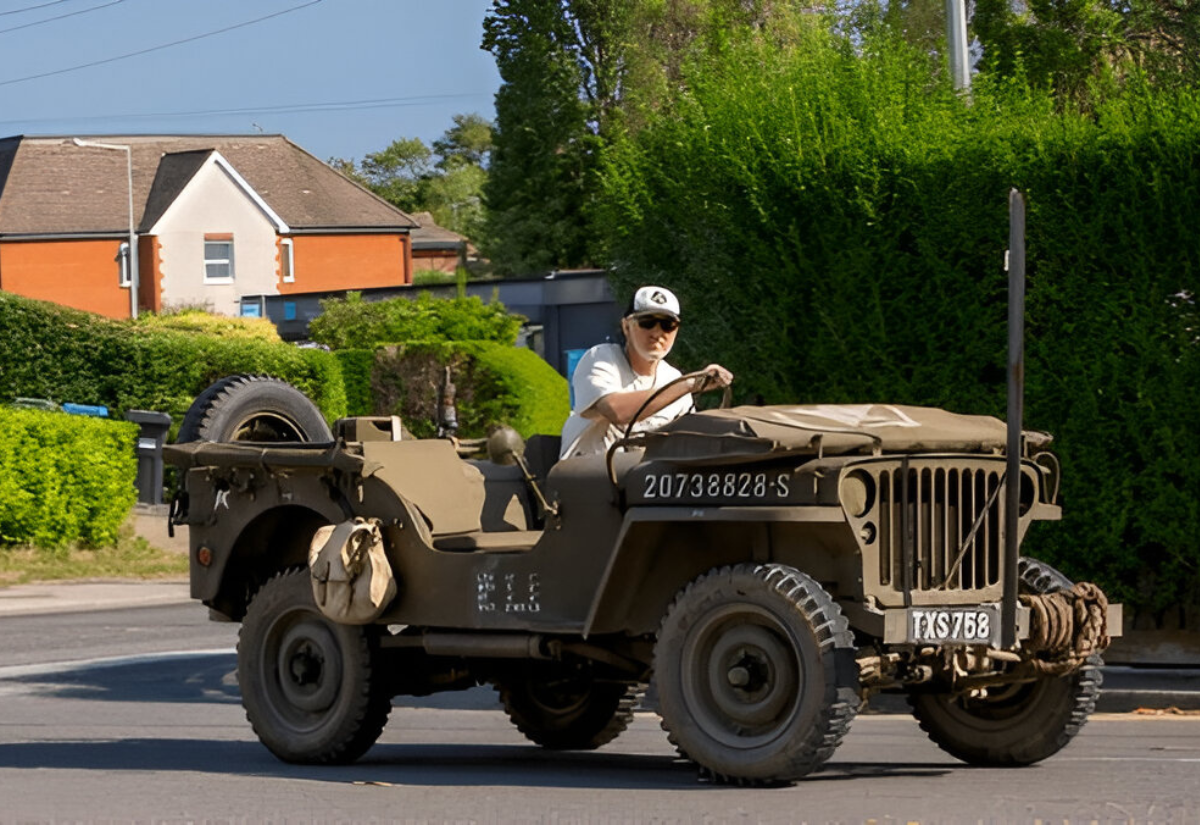Introduction
The Willys Jeep Company is remembered as the birthplace of one of the most iconic vehicles in history — the Jeep. What began as a small automobile manufacturer rose to global recognition during World War II, when its rugged military Jeeps became symbols of reliability and strength. After the war, Willys transformed the Jeep into a vehicle for everyday use, paving the way for modern off-road culture. This article takes a closer look at the company’s journey, its role in shaping military and civilian transportation, and the legacy it left behind.
The Origins of Willys Jeep Company
Early Foundation and Background
The Willys-Overland company was founded in the early 1900s, originally producing passenger cars before finding its place in military and utility vehicles. By the 1930s, the company was well established in the U.S. automotive industry but faced stiff competition from larger manufacturers. Despite challenges, Willys kept experimenting with compact, durable designs that would later prove essential for wartime needs.
How Wartime Demand Turned It Into a Key Player
When World War II began, the U.S. Army urgently required a lightweight, all-terrain reconnaissance vehicle. Willys competed against other automakers, refining its design until the prototype known as the Willys MB Jeep emerged. Its simple mechanics, rugged build, and adaptability quickly won favor. By 1941, the Willys Jeep became the backbone of the Allied forces’ mobility, earning a reputation as a vehicle that could go “anywhere, do anything.” Wartime demand transformed Willys from a modest carmaker into a name recognized worldwide.
Creating the Iconic Military Jeep
Development of the Jeep Prototype
In 1940, the U.S. Army reached out to American automakers with a clear but demanding request: design a small, lightweight, four-wheel-drive vehicle that could handle rough terrain, carry troops and equipment, and be mass-produced quickly. Willys-Overland, alongside competitors like Bantam and Ford, entered the race. After several rounds of testing, Willys introduced its prototype, the “Quad,” which impressed military officials with its powerful “Go-Devil” engine, strength, and practicality. This design laid the foundation for the Willys MB Jeep, a vehicle that would become legendary for its versatility.
The Company’s Vital Role in World War II
Once the Willys MB was standardized, production ramped up on an enormous scale. Willys-Overland, along with Ford under license, produced hundreds of thousands of Jeeps for the Allied forces. The vehicle’s ruggedness made it indispensable — it served as a troop carrier, ambulance, reconnaissance vehicle, and even mobile weapon platform. Soldiers praised its reliability in extreme conditions, from deserts to mountains. By the end of the war, the Jeep was more than just a machine; it was a symbol of freedom and resilience. Willys’ role in delivering this vehicle cemented its place in history as the company that built the world’s most recognized military Jeep.
Civilian Jeep Models and Post-War Success
The Birth of the CJ (Civilian Jeep)
When the war ended in 1945, Willys recognized that the Jeep’s reputation for toughness and reliability could translate into civilian life. The company quickly adapted its military MB design into the CJ-2A, short for “Civilian Jeep.” Unlike its military predecessor, the CJ featured small upgrades such as a tailgate, side-mounted spare tire, and improved seating. It was marketed as a practical tool for farmers, ranchers, and workers who needed a dependable utility vehicle that could handle rugged terrain just as well as it had on the battlefield.
How Willys Introduced 4×4 Vehicles to Everyday Americans
The CJ series didn’t just serve as transportation — it changed how people viewed vehicles. Before the Jeep, four-wheel drive was mostly associated with heavy-duty trucks. Willys brought 4×4 capability to ordinary Americans, allowing them to use the Jeep for work, recreation, and exploration. Whether plowing fields, hauling equipment, or navigating rural roads, the Civilian Jeep became an indispensable partner for many households. This step firmly established Willys as a pioneer in making off-road technology accessible to the public, paving the way for the modern SUV market.
Business Shifts and Industry Influence
Ownership Changes and Mergers
While Willys Jeep had made a strong mark with both military and civilian vehicles, the company faced financial pressures and increasing competition in the post-war years. In 1953, Willys-Overland was purchased by Kaiser Motors, becoming Willys Motors, Inc. Later, in the 1960s, the company was renamed Kaiser Jeep Corporation. This marked the beginning of a long series of ownership changes that would eventually bring the Jeep brand under the American Motors Corporation (AMC) in 1970, and later Chrysler, before becoming part of today’s Stellantis group. Each transition ensured that the Jeep name carried forward, even as the original Willys company itself faded into history.
Influence on Future Jeep Designs and Off-Road Vehicles
Despite these changes in ownership, the DNA of the original Willys Jeep remained central to all future designs. The rugged, functional styling of the CJ series directly influenced later Jeep models like the Wrangler, which still reflects the iconic flat grille and boxy shape of the wartime Jeep. Beyond its own brand, Willys’ vision for a lightweight, versatile 4×4 set the standard for the modern SUV and off-road vehicle market worldwide. Companies across the globe adopted similar designs, but the Willys Jeep remained the original blueprint. Its influence can still be seen today in both everyday SUVs and specialized off-road machines.
Why the Willys Jeep Company Still Matters
Cultural and Collector Significance
The Willys Jeep is more than just a vehicle — it has become a cultural icon. During World War II, it was celebrated as the machine that “won the war,” and in the decades since, it has appeared in countless films, photographs, and museums as a symbol of resilience and freedom. Today, vintage Willys Jeeps are highly sought after by collectors and restorers, often showcased at car shows and military history events. Their durability and timeless design keep them alive as treasured pieces of automotive history.
Lasting Impact on the Jeep Brand Today
Even though the Willys name no longer appears on modern vehicles, its spirit is still deeply embedded in the Jeep brand. The Wrangler, one of Jeep’s most popular models, carries clear design cues from the original Willys — from the seven-slot grille to the rugged, no-nonsense build. Off-road enthusiasts around the world continue to see the Jeep as the standard-bearer for adventure, a reputation built on the foundation Willys created decades ago. The company may have changed ownership many times, but the DNA of the Willys Jeep endures, shaping how we think of 4×4 vehicles to this day.
Conclusion
The Willys Jeep Company began as a modest automaker but grew into one of the most influential names in history. By creating the rugged military Jeep, it not only supported the Allied effort in World War II but also laid the foundation for the civilian 4×4 market. Its post-war models, ownership transitions, and enduring design influence show how a single idea — a tough, go-anywhere vehicle — could shape generations of cars to come. While the original company no longer exists, its spirit lives on in every Jeep built today, reminding us of Willys’ lasting mark on both automotive history and popular culture.
FAQ
Q1: Who started the Willys Jeep Company?
The company began as Willys-Overland, founded by John North Willys in the early 1900s. It became famous during World War II for producing the Jeep that defined its legacy.
Q2: What was the first Willys Jeep model?
The first military Jeep produced by Willys was the Willys MB during World War II. After the war, the company launched the CJ-2A, known as the first Civilian Jeep.
Q3: When did the Willys Jeep Company end?
Willys was purchased by Kaiser Motors in 1953, and the name gradually transitioned to Kaiser Jeep in the 1960s. Later ownership passed to AMC, Chrysler, and eventually today’s Stellantis.
Q4: Why is the Willys Jeep Company considered historic?
Willys Jeep is considered historic because it created the original military Jeep, which played a vital role in World War II, and introduced the first mass-produced 4×4 vehicles for everyday use. Its influence continues in the Jeep brand today.

